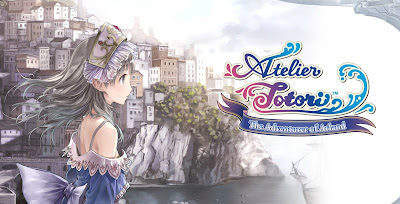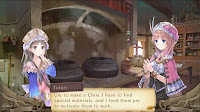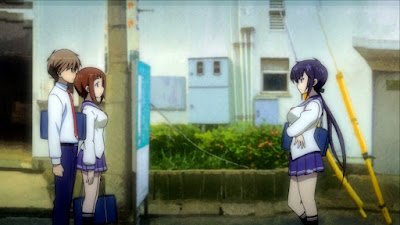Atelier Totori: The Adventurer of Arland (PS3)
A little over a year ago, GUST’s Atelier Franchise had its first USA release on the current generation of consoles with Atelier Rorona. It was a return to the roots of the franchise, with a stronger emphasis on alchemy and had less of a focus on adventuring. In my review I praised the delightful soundtrack, fascinating characters, and the jovial environment that is becoming rarer in games. Atelier Totori was released a year after Rorona was released in the United States. The game features upgraded graphics, a stronger focus on adventuring, and refined addictive gameplay that goes above and beyond the previous iteration. Atelier Totori is a wonderful experience that that is one of the best games released this year; it is a gem that shouldn’t be overlooked.
 |
| Totori in the Character Art |
Atelier Totori is an enormous improvement over the original release graphically. A brand new engine was made for Atelier Totori and it is light years ahead of Atelier Rorona in its visuals. The environment has nice subtle details that the original game engine would not otherwise be able to generate. The subtle improvements in the gaming engine improve the immersion when exploring Arland. Of the changes in the graphics, the biggest improvement is in the cell-shaded characters. They are probably some of the best cell-shading I have seen so far this generation. It does the beautiful artwork by Mel Kishida justice, looking almost identical to his artwork. In Atelier Rorona there was a disparity between the great artwork and the in-game graphics, in Atelier Totori it is not the case. GUST’s cell shading in Atelier Totori provides us gamers with some of the most beautiful anime art in a modern videogame; it is a sight to behold.
 |
| The Awesome Cell-Shading |
 |
| Yeah, her adventuring outfit is a little showy |
What makes the Atelier franchise unique is the alchemy section, which is unlike any other game I played. Each item gathered in the world can be used to create other items through alchemy. Totori either buys the items in the store or she gathers them in dungeons outside the town. Once back in Atelier Totori she goes to a big pot and the player is given a list of items that Totori can make via alchemy. Each item is given a level of difficulty, and the completion of creating items give Totori experience to raise her Alchemy Level. Every time that Totori creates an item she is using time, items, and MP, so for every item made there is a tradeoff. Totori gains access to higher level items by reading books that can be found in store all over Arland. The alchemy system is a refinement of Atelier Rorona and it improves the experience overall.
GUST games are known for many things, and having wonderful soundtracks is one of them. Ken Nakagawa and Kazuki Yanagawa work together as Atelier Totori’s dual composers and create a top-tier soundtrack that can stand with the best of them in the gaming world. The opening song for Atelier Totori entitled “Pilgrimage” is a nice unique vocal (and anime opening) that immerses into the world of Atelier Totori. Each of the themes in Atelier Totori fit the environment perfectly. Totori’s hometown has a nice laid back theme with a solo flute dominating the piece, giving a sense of innocence. The adventurer themes are very diverse, some pieces have a heavy flute, and others have a heavy Celtic feeling. They all create a strong sense of adventure that many games cannot really compete with. Totori’s theme that plays in her shop is another wonderful piece that mixes the innocence of Totori and the hard work of an alchemic shop in a perfect aural theme. The game has many musical influences, with a strong Celtic undertone that gives the franchise a unique feeling throughout the game.
I said it before and I will say it again, Atelier Totori is one of my favorite games released this year. It is incredibly addictive and a refinement of a wonderful gaming formula. It has an incredible cast of characters that are extremely likeable and are easy to relate to. The interactions between Totori and them will provide the player with lots of smiles and tears. Gameplay is a massive improvement over Atelier Rorona, lifting the heavy deadlines and giving the player more freedom to explore the world and become the best Alchemist in Arland. The soundtrack is one of the best ones out there, showcasing the incredible talent of GUST composers Ken Nakagawa and Kazuki Yanagawa. The biggest improvement for Atelier Totori is the graphics, it showcases some of the most gorgeous cell shading this generation and is one of the first games that has the beautiful in-game characters match the gorgeous artwork of the original character designer. Not knowing anything about the franchise before it migrated to the PS3, it has quickly become of my favorite franchises, featuring addictive gameplay, incredible graphics, amicable characters and a wonderful soundtrack.
 |
| Totori Helmold |
 |
| Cecilia Helmold |








Comments